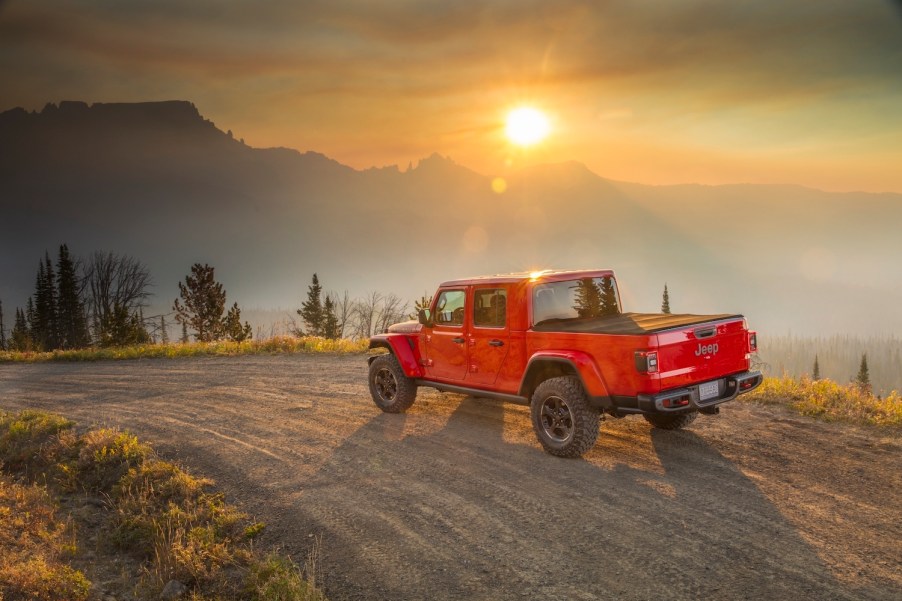
4 Benefits of Owning a 4×4 Vehicle
A 4WD system can make your truck or SUV heavier, less fuel efficient, and quicker to wear out. So why does anyone order a 4WD? A 4×4 vehicle can be a real lifesaver if you find yourself in a situation where all your wheels don’t have equal traction. Some drivers also prefer the control 4WD gives them that AWD does not.
1. 4×4 vehicles offer improved traction

The main benefit of owning a 4×4 vehicle is improved traction when 4WD is engaged. Let’s say you are trying to drive out of a poorly plowed, icy parking lot. If you have a RWD with an open rear differential, one tire spinning on ice could leave you stranded. If you engage your 4WD and your front tires have some traction, you can drive yourself off of the icy patch.
The number of situations where improved traction could be helpful are only limited by your imagination: Maybe you’re using your truck to drive mulch to a garden in the middle of your lawn, or maybe you get caught in a snowstorm while coming home from a ski trip. Four-wheel-drive is especially important if you plan on doing much driving off-road.
2. You have precise control over your 4×4 vehicle

Are you trying to decide between an AWD and a 4WD vehicle? All-wheel-drive (AWD) is engaged all of the time. This means less hassle for the driver, but it also means lower mpg and a quicker wear cycle. Many truck and SUV buyers prefer 4WD with a 4Hi, 4Lo, and 2Hi selector for this reason.
Most 4WD systems have one other advantage over most AWD systems. This is because most 4WD systems are engineered for low speeds, so they force the front an rear wheels to spin at exactly the same rate. This would damage your tires and your drivetrain if you used 4WD while cornering at highway speeds. But in low traction situations, this feature of 4WD is very valuable. When the front and rear axles are “locked” together in this way, it keeps one set of wheels from spinning much faster than the other in a low traction situation.
3. 4WD improves resale value

Many vehicle buyers are only shopping for a 4×4–according to AutoTrader. This may be because they are used to 4WD and prefer it, they may use their vehicles off-road often, or they may even live in an area where a 4×4 vehicle is necessary for part of the year.
In addition, folks considering buying a used vehicle to press into service plowing or on a farm are likely only considering a 4WD. For this reason, you have many more resale options for a 4WD than a 2WD. This increased demand may even increase the resale value of your 4WD vehicle.
4. 4WD provides peace of mind

There is no way to put a price on peace of mind. But imagine you are returning from that family ski vacation and a storm rolls in. How much better will you feel knowing you are prepared to drive your loved ones home, despite the treacherous conditions?
You also may find yourself avoiding adventurous drives along dirt roads or even off-road in a 2WD. Sure, you might be able to complete the drive without getting stuck in 2WD. But what if you do get stuck? You have no good way of getting out. The peace of mind of a 4×4 vehicle might translate to taking more risks and seeking out more adventure.
Next, learn about 4WDs with a locking differential for even better offroad performance or see the difference between 4WD and AWD illustrated in the video below:



